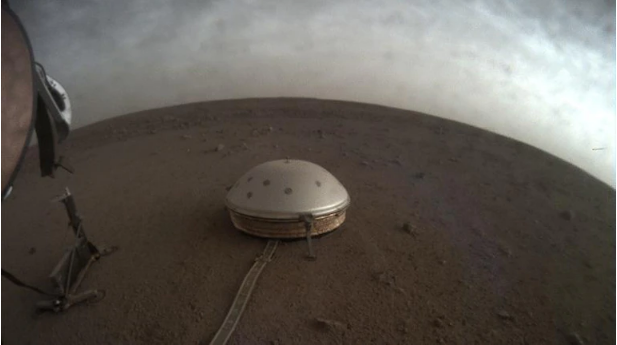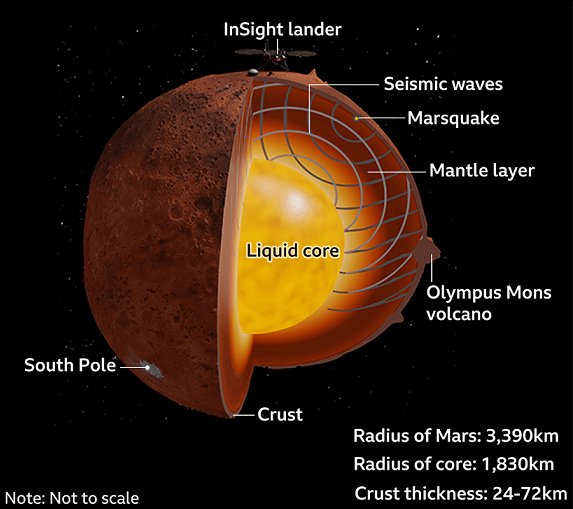A device to measure quakes on Mars is providing the first detailed look at the interior of the planet. It has revealed a thin crust and a hot molten core beneath the frigid surface which is quite surprising.
The three studies and a companion article were published in the journal Science. In the studies, the scientists reported that the crust of the red planet is within the thickness range of Earth’s crust. The mantle of Mars present between the crust and core is roughly half as thick as Earth’s mantle. And the core of this planet is on the high side of what scientists actually thought it to be, although smaller than the core of our own nearly twice-as-big planet.

The new studies confirm that the Martian core is in a molten state. But according to the international research teams, more research is required to exactly know whether Mars has a solid inner core like Earth’s, surrounded by a molten outer core or not.
Scientists are hopeful; of getting a larger picture of the same with stronger marsquakes. They could help identify any multiple core layers
The findings have been concluded after 35 marsquakes registered by a French seismometer on NASA’s InSight stationary lander, which arrived at Mars in 2018. The seismometer which has a shape of a dome has detected 733 marsquakes so far, but the 35 with magnitudes from 3.0 to 4.0 helped process these studies. Most of the sizable quakes originated in a volcanic region 1,000 miles (1,600 kilometers) away where lava may have flowed just millions of years ago.
Current studies have shown that Mars’crust possibly reached as deep as 12 miles to 23 miles (20 kilometers to 37 kilometers). The mantle has extended down nearly 1,000 miles (1,600 kilometers). The martial core is relatively lightweight with a radius of 1,137 miles (1,830 kilometers).
Earth which is almost double the size of Mars has a crust that ranges from a few miles (kilometers) beneath the oceans to more than 45 miles (70 kilometers) beneath the Himalayas.

Mark Panning of NASA’s Jet Propulsion Laboratory took part in the crust study has revealed that even the biggest marsquakes are so weak they would barely be felt on Earth. He’s hoping for “the big event”, which would make it easier to prepare the data and define the Martian interior.
Panning has appreciated the marvelous mission of NASA. He said, “By going from cartoon understanding of what the inside of Mars looks like, putting real numbers on it … we can really expand the family tree of understanding on how our solar system’s rocky planet formed.”
InSight by NASA has been hit with a power crunch in recent months. Its solar panels got covered by dust just when Mars was approaching the farthest point in its orbit around the sun. Flight controllers have increased the power by using the lander’s robot arm to release sand into the blowing wind to remove some of the dust from the panels. The seismometer is working continually, but all other science instruments are on hiatus because of the power situation. After failing to burrow more than a couple of feet (half a meter) into the planet, the German heat probe was also declared dead in January. The mission of InSight has got extended by another two years.
Some other missions that are currently studying the red planet are the Mars orbiter mission (Mangalyaan) by India, the Emirates Mars Mission (Hope) by UAE, Tianwen-1 by China, Perseverance, and Ingenuity by USA’s NASA.



